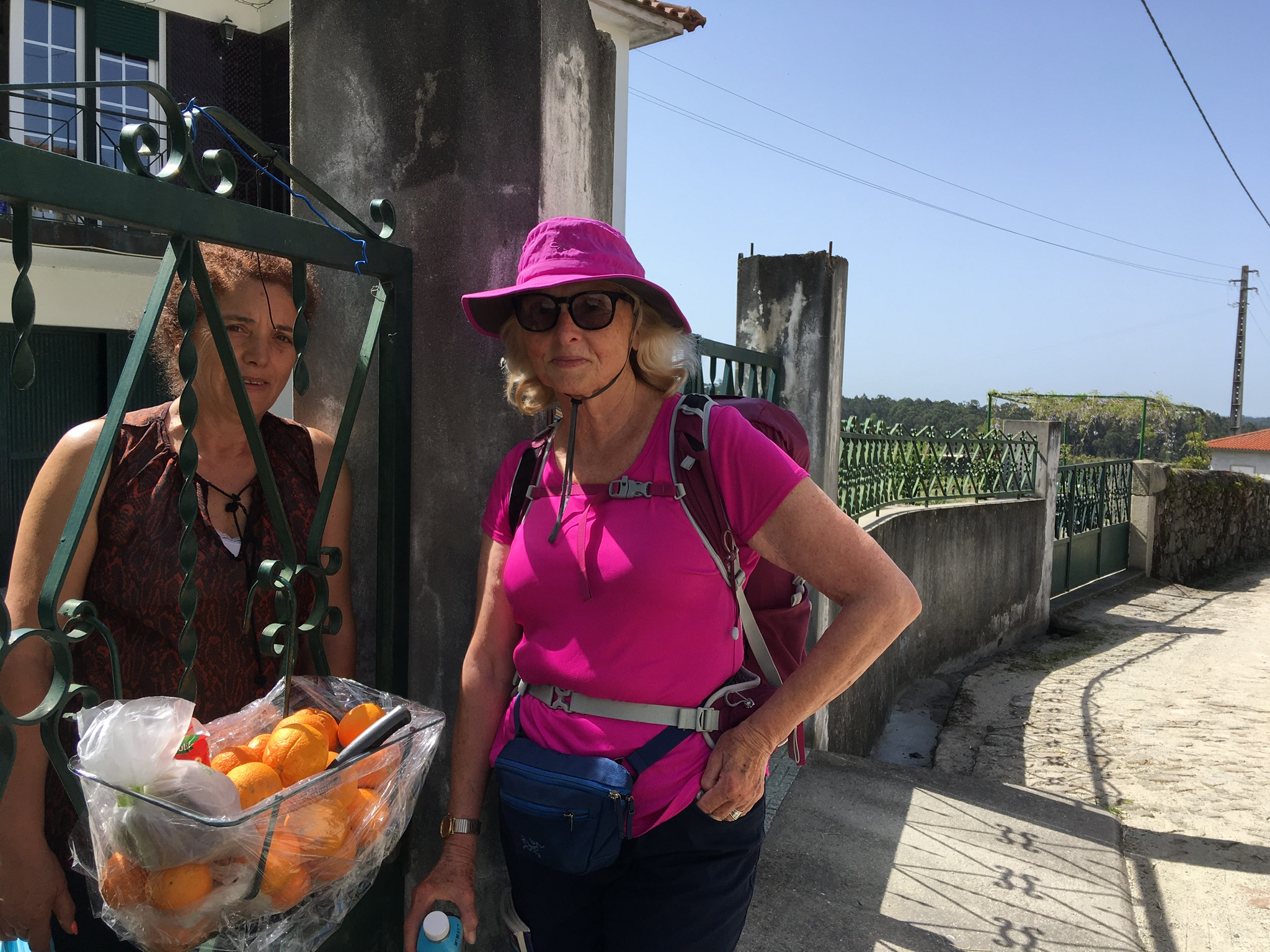We left this unusual village with a multitude of roads meeting in the grassy town square. Our lodgings were the only reason we needed many exits in case some were blocked. It was freezing cold and we wanted a heater (which is obligatory in the cheapest of accommodation) but our host insisted the cabinet was full of blankets to wrap around ourselves. Maybe a small thing but we still need a camino to sort out these setbacks.
On our way out we saw what looked like a single turret castle but had previously been a water tower and now a type of community centre.This tower has a high pipe carrying water to the towns richest inhabitant’s house and from there it irrigates all his rich farmland. It looked simple but sounded complex, so I’m not too sure how it all worked.
I hadn’t realised that our village was quite elevated (so the rise the day before must have been quite gradual) because the walled cobbled streets continued downhill to a mediaeval bridge, a gorgeous place to rest a little and take some memory shots. We now had our first really steep cobbled hill which was made less steep by a woman giving oranges from her orchard to tired pilgrims. Down to another mediaeval bridge and then our home, a Quinta ‘older than Australia’ (our host declared), built in 1755. It has a very crooked tree-beam roof, looking out on a grapevine covered courtyard with the sweet sounds of little birds.
Our guide books talk of walking through cooling forests. In Spain for example we took this as meaning the tall beeches and fir trees; poplars and chestnuts in Italy; the great spruces of Switzerland, and maple and oak in France, but so far in Portugal it has meant eucalypt trees.
First imported from Australia in the eighteenth century they have been a great source of income in the form of pulp and paper. The downside is their high oil content which has led to many devastating bushfires throughout the 25% of Portugal that is their home.
This land was formerly the home of olives, grapes and cork trees, but the large companies making fortunes from this industry are stopping a push from many who want their traditional trees back. Huge growth in gum trees has been partly responsible for a large exodus to the cities but it’s also an ‘agri-cultural shock’ for locals and for foreign visitors. For us, as Australians, it is a reminder of our home, but not theirs, and I think the vast majority of Portuguese want their home back.


Happy Easter to you both, we had a wonderful Easter in Canberra with the family and also went to the National Folk Festival there, wonderful entertainment. Keep up the good walking
Love Paul & Robyn xx
Hello you two
Sorry I missed your post, thanks for your good wishes
Love from us both
William
Wishing you both a happy Easter. Great photo of Corrie.
Sue and Rob
Thank you Sue, thank you Rob, very thoughtful of you. She’s very photographic, (I look okay in about 1 in 20) , but she’s also in great shape too. Will and Corrie
Thanks Will. I had no idea that Portugal has so many eucalyptus trees. I’ll avoid them in my videos when we drive through next month.
Yes, it’s quite amazing Mark, the large forest today was eucalypt and there was hardly a moment when we weren’t in sight of one. Come on May.